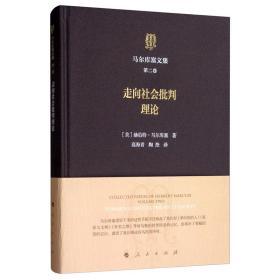
本雅明的语言批判、翻译批判及现代性批判(英文版)
¥ 50 九五品
仅1件
北京朝阳
认证卖家担保交易快速发货售后保障
作者袁文彬 著
出版社中山大学出版社
出版时间2020-04
版次1
装帧平装
上书时间2024-11-01
- 在售商品 暂无
- 平均发货时间 28小时
- 好评率 暂无
- 最新上架
商品详情
- 品相描述:九五品
图书标准信息
- 作者 袁文彬 著
- 出版社 中山大学出版社
- 出版时间 2020-04
- 版次 1
- ISBN 9787306063977
- 定价 38.00元
- 装帧 平装
- 开本 32开
- 纸张 胶版纸
- 页数 243页
- 字数 380千字
- 【内容简介】
- 德国哲学家本雅明(Walter Benjamin)对语言、翻译和现代性都做过深入的思考,《本雅明的语言批判、翻译批判及现代性批判(英文版)》即是对他的这三个主题的综合研究。作者认为,本雅明把语言和翻译看作是对现代性哀悼的隐喻,资本主义现代性的生活日益碎片化,并由商品文化所标识。本雅明试图从语言、翻译中寻求本原,并由此重建原初的完整的世界,使之从人类的欲望、贪婪和愚昧中得到拯救。
- 【目录】
-
Abbreviations
Chapter One Introduction
Chapter Two A Plurality of Benjamin\'s Texts: From Kabbalah to Deconstructive Reading
Chapter Three Critique of Language
3.1 The Resources of Views of Language: German Romantic Tradition and Jewish Kabbalistic Theology
3.2 Critique of Bourgeois View of Language
3.3 Critique of Kantian Philosophy on Experience
3.4 Language, Materialism and the Mimetic Faculty
3.5 Three Languages: Language of Man, Language of Things, Language of God
3.6 Benjamin\'s Semamic Triangle: Word, Name, and Object of Intention; Naming Language/Sign Language; Nominalism/ Realist
3.7 Language and Mind
3.8 Degeneration of Language
3.8.1 Internality and Externality of Langauge
3.8.2 Degeneration of Language and Origin of Modernity
3.8.3 Translation: Rescuing the Sacred Anamnesis
Chapter Four Critique of Translation
4.1 \"The Death of the Reader\"
4.2 Translatability/Untranslatability
4.3 The Forerunner of Post-moderu View of Translation
4.4 Hermeneutics: The Whole and the Part
4.5 Affinity Between Pure Language and Universal Grammar, and the Kinship of Languages
4.6 Demarcation Between Ontology/Epistemology; Science/ Humanities; The Tree of Life/The Tree of Knowledge
4.7 Translation as a Metaphor
Chapter Five Critique of Modernity
5.1 Origin of Benjamin\'s Modernity
5.1.1 Charles Baudelaire
5.1.2 Marx
5.1.3 Nietzsche
5.1.4 Georg Simmel and Siegfried Kracauer
5.2 Modernity of Art and Its Cost
5.2.1 The Age of Mechanical Reproduction
5.2.2 The End of the Storytelling
5.3 Prehistory of Modernity
5.3.1 Methodology of Constructing Prehistory of Modernity: Archaeological Monadology
5.3.2 Modernity of Paris in the 19th Century: Illusion and Disillusion
Chapter Six Theological Dimension: Traces of Messiah
Chapter Seven Conclusion
Bibliography
点击展开
点击收起
— 没有更多了 —












以下为对购买帮助不大的评价